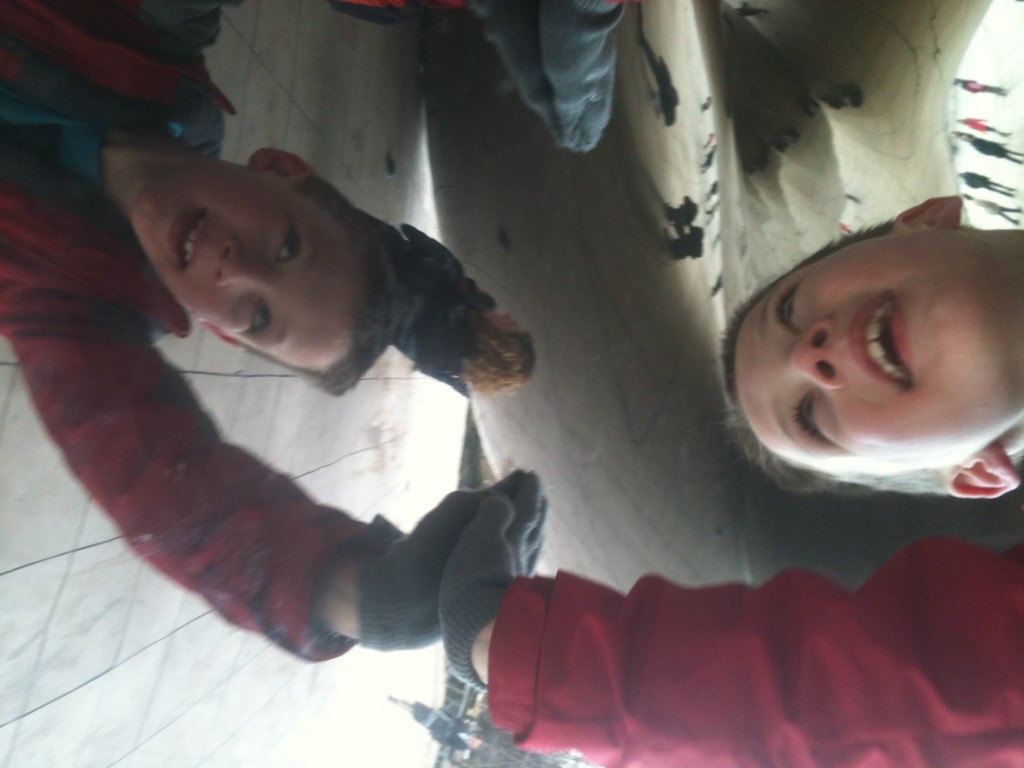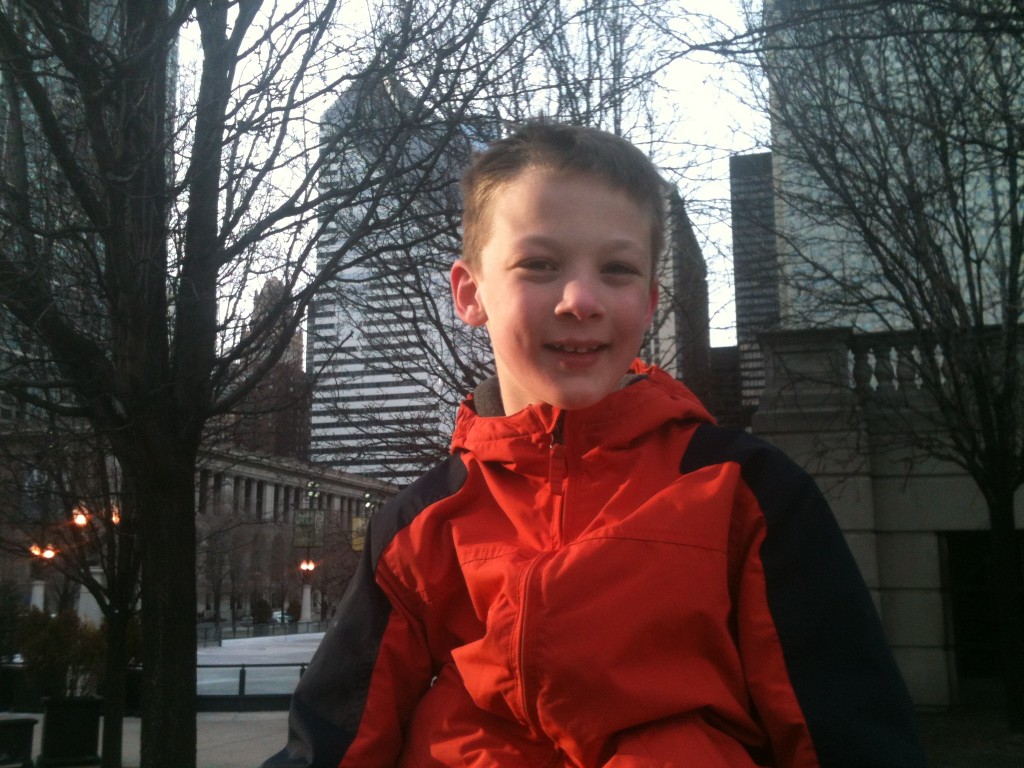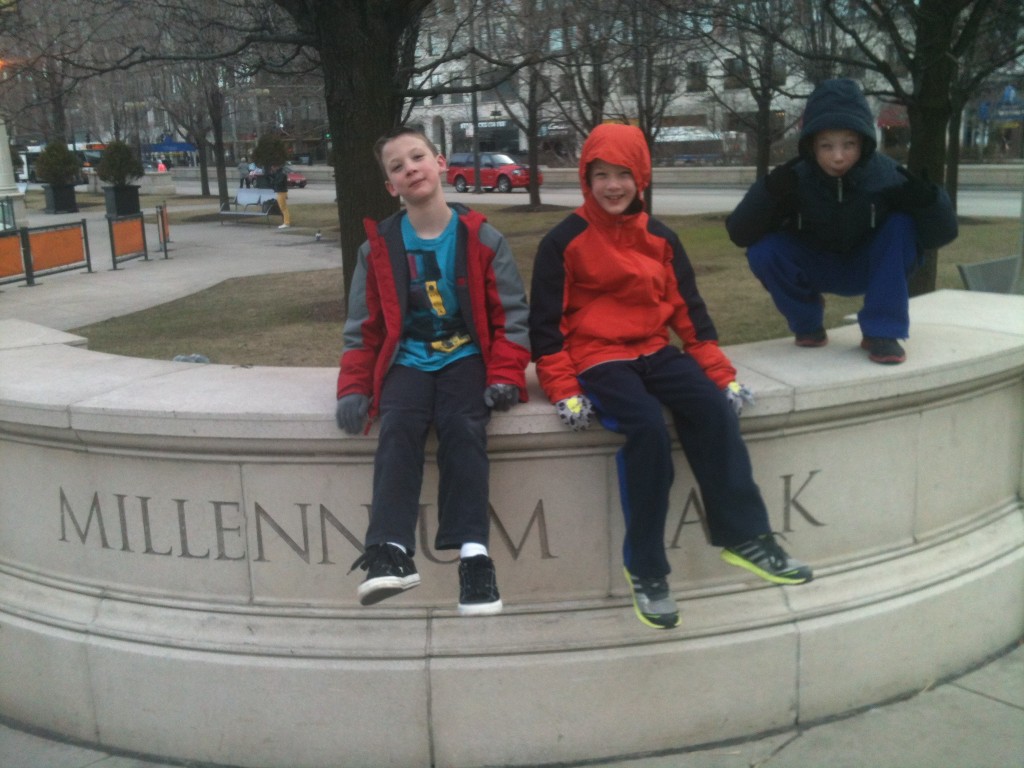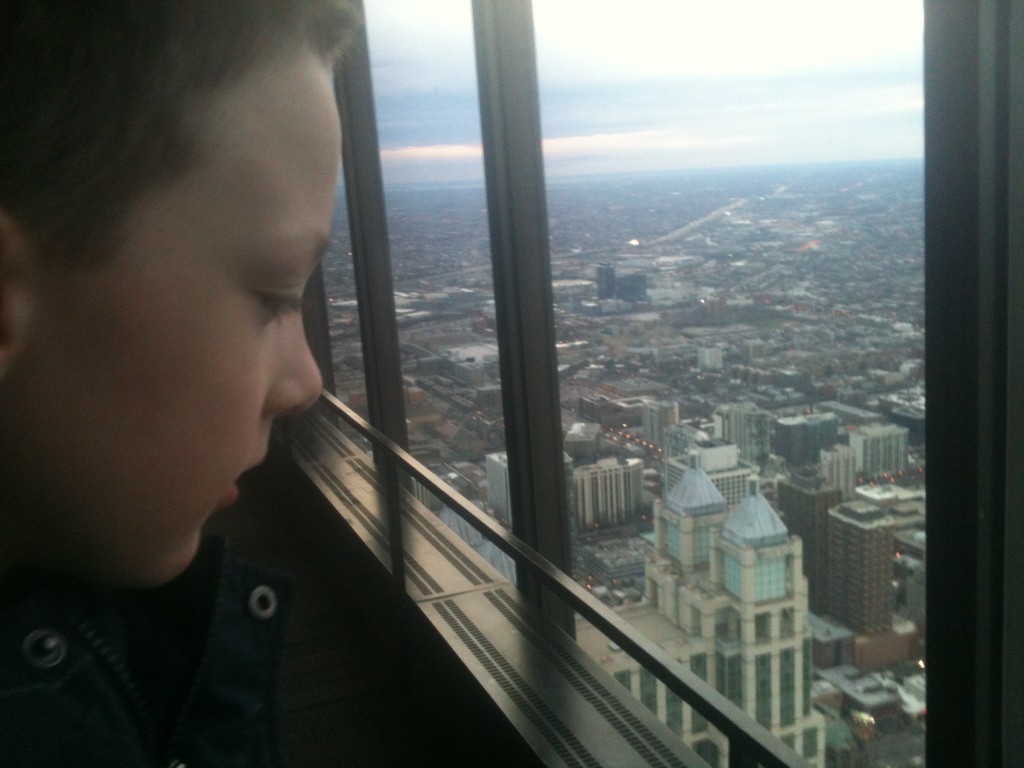
On our first afternoon in Chicago, my wife, my triplet sons and I set out in the face of a biting wind down Michigan Avenue.
These eight-year-olds have never been to a city much bigger than Louisville, Kentucky, where we live. I worry that Chicago will scare or overwhelm them. If this trip goes badly, will Gabrielle and I have to reassure them that no, big cities aren’t all bad? What version or vision of Chicago can I show these children that might inspire them, as the best travel can, to look at the world and themselves in a different way?
On the sidewalk, we hold hands as people swirl around us. A man in a ragged sweatshirt sits in a doorway, muttering, “My life, my life, my frickin’ life.” The boys’ grips tighten.
We cross the Chicago River, near the spot where the city was born. On the north bank is where Jean Baptiste Point du Sable established a trading post about 1778. Du Sable, the son of a slave, helped build the area’s first buildings, ancestors of Willis (formerly Sears) Tower, the John Hancock Center and Tribune Tower. Looking up at the skyscrapers, my son Leo says, “They make me feel really small.”

Urban Reflections
At Millenium Park, we stop at Cloud Gate, a 66-foot-long metal sculpture with a rounded reflective surface. Leo, Luke and Ace look identical, a fact that so far has gone largely unnoticed in Chicago. This changes when we cross the archway to the underside of Cloud Gate (nicknamed “The Bean”), which is like entering a tunnel with mirrored walls. Like various passersby, even I do a triple-take at the sight of three boys with essentially the same face slapping at each other and their own reflections. In fact, while trying to keep up with them, I confuse reality and reflection and slam my head into The Bean and fall to the ground.
Yes, kids, the big city can be a dangerous place.
I appreciate the compassionate strangers who join my family in asking me whether I’m OK. It’s a trait I’ve noticed on previous visits: People in Chicago are nice.
I recover, and after making an obligatory stop at the Lego Store, we collapse on our hotel beds. We chose the Peninsula Chicago in part because its Magnificent Mile location puts us within walking distance of various attractions. Also, the hotel’s website describes the Peninsula as both “kid-friendly” and “luxurious,” a combination the boys have never experienced.
When I ask what they’ve noticed about Chicago so far, Ace says, “I like that the people who met us at the car (valets and bellhops) were dressed nicely. That’s how I know they really worked here and weren’t just some random drifter taking our suitcases.”
He adds, “I also saw a lot of homeless people. Some of them were singing. Some of them were sticking out hats or cups asking for money and jingling the coins.”
“Yeah, I wanted to give them money,” Luke says, “but I knew Mom and Dad wouldn’t let me.” He says this like we’re being hard-hearted, a charge I feel unable to either deny or explain.
“Anything else?” I ask.
“Cloud Gate,” says Luke, “I thought it looked like a giant silver butt.” The eight-year-olds laugh.
So far, their worldview seems unchanged.

Swimming Upstream
Every family has its own vacation rhythm. Ours allows us to wake up early, but virtually nothing will get us out of the hotel before 10:00, at the earliest.
This has consequences, especially when visiting an attraction as popular as Shedd Aquarium. The Shedd’s public relations coordinator cautioned me that spring break Thursday would be busy, and we might have a better experience if we arrived at, say, 9:00.
We show up at 11:15. Thousands of people are already there. The Shedd would see about 11,000 guests on this day, more than twice the number of a normal Thursday. Our advice: go on a normal Thursday.
We spend hours packing in to see penguins and jamming in to Jellies (a special exhibit whose brainless, glowing subjects I find strangely hypnotic, though their display here is unspectacular). The effort required for us to get a close-up look at, say, small-mouth grunts fighting over a hunk of chum, resembles nothing so much as small-mouth grunts fighting over a hunk of chum.
The highlight of our visit to the Shedd is the aquatic show, which is delightful. Kattrell, a Pacific whitesided dolphin, does a sort of moonwalk across the water. A beluga whale leaps from the water to pound a volleyball, and a sea lion flops up into the stands for a kind of meet-and-greet. Equally memorable are the looks on the faces of the trainers and, I swear, the animals themselves. They radiate affection and respect for one another, as if they were all colleagues. If the Shedd gives out employee satisfaction surveys, I suspect the dolphins and belugas score as highly engaged.
Appropriately inappropriate.
Gabrielle has planned this trip with the children’s enjoyment as its organizing principle, but at roughly the halfway point in our stay, she says, “I need to look at something that doesn’t involve fish or Legos.”
I gross the boys out by kissing her.
The Art Institute of Chicago has an education center with a number of child-friendly exhibits, all of which we ignore, along with the children’s objections. I issue them a challenge:
“Guys, I want you to find and take pictures of the works of art that you think are the craziest and the most inappropriate. OK?”
Suddenly the art museum holds new promise; the boys take our phones and create their own mini-collection that includes 16th-century German armor, a 17th-century Italian shield, axes, cannons and a centuries-old carving of a Japanese demon with six-pack abs. They find glorious scandal in every bared Bohemian breast, every Renaissance rump.
Meanwhile, Renoir, Chagall and Monet provide Gabrielle and me with what feels like a distinctly grown-up form of nourishment. Of course, most of the Institute’s collection comes from distant places and eras. Like the sea creatures of the Shedd, these paintings and sculptures are in Chicago, but most of them are not of Chicago. It makes me want to see a work of art that is both.
Before I can ask a docent for help, I sense it’s time to go. Luke is giggling at the partly covered bodies on display in Francesco Solimena’s Adam and Eve in Paradise (c. 1700). Ace shrugs. “I’m tired of nudity.”
The View from Above

Willis Tower is the tallest building in the city, but it’s hard to imagine a more spectacular urban view than what we see at sunset from the observation deck on the 94th floor of the John Hancock Center. This is where we end our last day in Chicago.
Our kids have never flown in an airplane, so this is the highest off the ground they’d ever stood. Gabrielle and I are standing behind them, but reflected in the glass, we can see three sets of eyes widen at the city stretching out beneath them, as they look down at the tops of the same buildings that had looked impossibly tall when we arrived.
“What do you think?” I ask Leo.
“I feel like a giant.”

Graham Shelby has published more than 50 personal essays in print, online and on public radio. His work has aired nationally on NPR’s All Things Considered, Marketplace, A Prairie Home Companion and SiriusXM, and internationally on the Voice of America (VOA) network. The producers of The Moth Radio Hour recently invited Graham to New York to perform a story as part of The Moth Mainstage series. Graham lives in Louisville, Kentucky with his wife and triplet sons.








